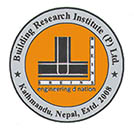
Today (NST)
Friday, Apr 25, 2025
Smart Search
Please post in your Technical Queries, Comments & Suggestions to Contact us......
Advertisement

For Advertisement
|
|
| Subscribe to BREINS Sci-Tech |
| Visit this group |

Concrete Technology
Water to Cement ratio
The most important factor determining the strength of concrete is the
water to cement ratio. It is the ratio of weight of mixing water (free water available for the reaction with cement) to that
of cement in the mixture. Cement needs water of about 38% by weight
for complete hydration. But since the complete hydration is a long term
process, and under practical conditions, the period of concrete mixing
and casting being short, the cement combines with only 23% of water.
If only 23% of water is added while mixing, the concrete won’t be workable because the water-cement ratio of 0.23 will be too less. So additional water will be required for workability. This water in excess of 23% by weight will evaporate on drying of concrete, creating voids in it due to trapping of air bubbles insides, thereby reducing the strength of concrete.
Assuming full compaction, and at a given age and normal temperature, strength of concrete can be taken to be inversely proportional to the water-cement ratio. This is so called the Abrams’ law.
Abrams’ law is a special case of a general rule formulated empirically by Feret:

S = strength of concrete
K = a constant
c, w & a = volume of cement, water & air respectively
Degree of Hydration
Generally, strength of concrete is expressed as a function of water-cement
ratio. But actually, strength at any water-cement ratio depends upon
the “degree of hydration” of cement. Strength of the concrete is dependent
on solid products of hydration of cement to the space available for
formation of this product: “gel/space ratio”. The conventional relation
between strength and water-cement ratio will hold good primarily for
28 days strength for fully compacted concrete.
Instead of relating the strength to water-cement ratio, the strength can be more correctly related to the solid products of hydration of cement to the space available for the formation of this product. This ratio is defined as the ratio of the volume of the hydrated cement paste to the sum of volumes of the hydrated cement and of the capillary pores.
Aggregate to Cement
ratio
The aggregate-cement ratio represents the volume of cement paste in
a concrete for a given water-cement ratio. Higher the aggregate-cement
ratio, lesser will be the volume of cement paste and vice-versa. Higher
aggregate-cement ratio means, larger volume of concrete is occupied
by the aggregates hence less proportion of cement paste. The total volume
of porosity in concrete formed after the hydration would be lower for
the lower volume of cement paste used. If the total volume of porosity
is lower then the strength of concrete will be higher.
It has been found that for a constant given water-cement ratio, a leaner
mix leads to a higher strength.